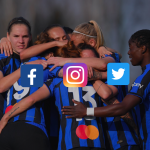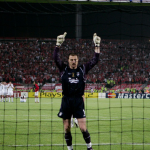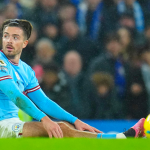
How many clubs have an account dedicated to women's teams?
In the women's Serie A almost 60 per cent, a figure that attests to how many more steps still need to be taken

March 9th, 2023
No matter how much progress has been made in Italy, women's football is still lagging behind other nations that had already focused on this very up-and-coming movement in earlier times. In fact, a few months ago we interviewed Agnese Bonfantini, a more than promising winger at Juventus, who precisely on the growth of women's football in Italy admits that more needs to be done, even though there has been growth and even in a short time. And in this process of growth, one cannot overlook social media and all the communication channels that have changed everyday life and revolutionised the way we communicate, making us become not only users of news but also real sources of information. And of course this revolution has affected the world of football, which has had to adapt, coordinating and declining its image on social media.
Today, the feed of a club represents much more than a simple profile, it is the image that the club wants to give of itself in the eyes of fans and simple enthusiasts, it is a way to better convey all the projects and initiatives undertaken, whether social or sporting. A profile today is an asset that the club can use for commercial purposes, becoming much more than a simple container of videos and images. A club therefore today cannot avoid being present on social networks, and given that today all men's teams have a dedicated profile, we wondered how many teams have decided to divide their communication, creating a channel dedicated only to the women's team.
First of all, a distinction must be made between leagues, for those who do not know, the women's Serie A follows a different format than the men's. In the women's, there are only 10 teams that take turns playing each other in the first phase consisting of a first round and a return round. After the first phase, the top five ranked teams face each other in a sort of mini and tight championship valid for winning the championship, the last five instead face a different one that is obviously worth the salvation. In addition to the last placed team, the relegation to Serie B will therefore be a formation between the penultimate played and the second placed team in the cadet championship.
An atypical conformation that is often sponsored in the league council by De Lauretiis to definitively change Serie A and make it, in his opinion, much more exciting. In the Serie A there are not the same teams that we see in the men's league, such as Pomigliano, an Italian club that has never achieved as much as the women's league. There are also clubs that bear the name of teams we already know but do not share the same ownership and all that goes with it. Como and Napoli, which play in Serie A and B respectively, are perfect examples. The two clubs have a very similar company name but are in no way connected to the men's teams. A case in point is that Fiorentina did not have one until recently but bought the sporting title of another club and has now set up a very diverse and well-organised project.
In the women's Serie A, 6 out of 10 clubs have a dedicated profile, the most recent being that of the women's AC Milan, which was created at the end of February, with the intention of raising awareness of a formation that wants to break the domination of Juventus, trying to win a few titles. On the other hand, the most long-lived ones are those of Fiorentina, Juventus and Roma, who have long since followed the example of other foreign clubs, opening ad hoc profiles. The biggest surprise is to see a club like Inter, always one step ahead when it comes to communication, not having a dedicated ad hoc profile, keeping everything in the main profile, thus mixing posts dedicated to the men's team, the women's team and even the youth team. This is an unusual choice for a team that for years and still today makes people talk about its way of communicating, always up-to-date and never banal. Moreover, given the calibre of the team and the agreements that have been closed, including the one with MasterCard, the main jersey sponsor, it is strange not to see something specially designed for the Nerazzurri's female footballers. And after Inter, on the other hand, in this strange ranking of teams that have decided to keep only one channel for all their teams, we find Sampdoria, Sassuolo and Parma. While the latter two try to integrate their communication with that of the men's team, publishing content from the women's team, the same cannot be said of Samp, where content dedicated to the women's team is shared more rarely.
And in Serie B the situation is by no means different, in a league of teams that are not equal to the men's teams, suffice it to say that the only ones 'in common' are Lazio, Genoa, Brescia, Hellas Verona, Cittadella, Napoli and Ternana, only a few of which have a profile. The most virtuous is certainly Genoa, a club that from the very beginning, perhaps also thanks to the arrival of 777 Partners, invested in the women's team, adopting a communication very similar to the main profile.
From an institutional point of view, on the other hand, great strides should be made, as there is no dedicated profile for each league, as in the case of the men's leagues. Suffice it to say that the men's Serie A has no less than two dedicated profiles, the first for the European audience (Lega Serie A), while 'That Serie A' focuses more on the American target audience, where Italian football is obviously followed and on the rise. While the men's Lega B has only one profile. Returning to women's football, the only dedicated institutional profile is the one that goes by the name 'FIGC Femminile' and follows the two main leagues, sharing goals, plays and rankings of what happens every weekend on the Italian playing fields.
Therefore, net of the profiles created so far, in the women's Serie A only 60% of the teams have a dedicated one, while the others have grasped the opportunity from the outset, putting themselves in step with the Spanish, French and English clubs, which to date excel in the women's movement, not only in terms of players but also in terms of the importance they have carved out in recent years. Certainly, as mentioned at the outset, Italian women's football still needs to improve from a sporting point of view first and foremost, and this process undoubtedly also passes through its communication, which is still little exploited and used. However, considering the goals and objectives achieved in recent years, it is to be expected that the women's movement in general, in a nation like Italy, is destined to grow more and more, passing also through a communication that is no longer integrated but also focuses on the players and the club, which as always can be an important asset.












